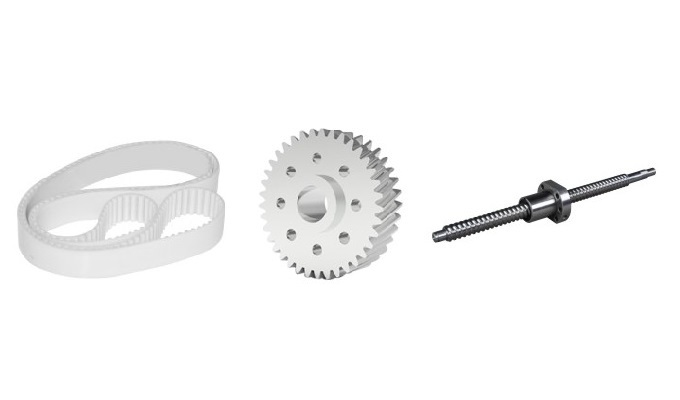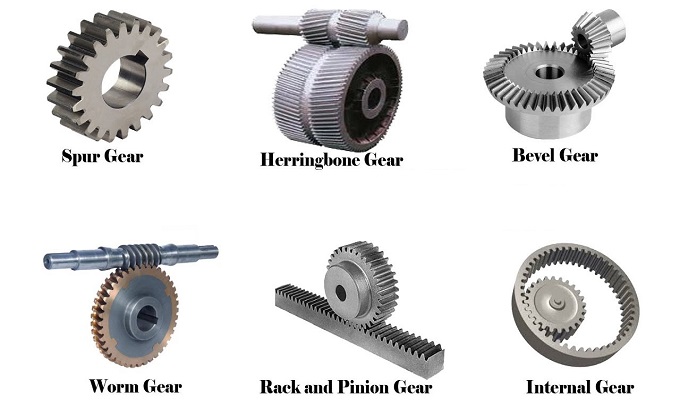The common failures of gears can be classified into gear shaft failures, web failures, and gear tooth failures. The first two failure types are generally caused by factors such as stress failure, fatigue failure, and resonance failure. Gear tooth failures, on the other hand, can be categorized into five different forms based on their failure modes.
Gear Tooth Fracture

Description: Gear tooth fracture refers to the separation or detachment of the entire or a portion of a gear tooth from the gear, commonly known as root fracture.
Impact: Gear tooth fracture is the most severe form of failure. The broken tooth can cause instantaneous jamming or damage to the gearbox due to centrifugal forces, leading to equipment shutdown. It must be avoided.
Diagnosis: Gear teeth experience meshing forces during operation, with the root section bearing the highest bending stress and often experiencing stress concentration at the root fillet. Overload fracture can occur when the instantaneous impact load exceeds the rated load. Fatigue cracks can develop on the tension side of the root when the alternating stress exceeds the material's bending fatigue limit and repeats continuously, ultimately resulting in fatigue fracture.
Solution: During gear design, the bending fatigue strength of the tooth root should be checked. Typically, improvements can be made by increasing the module, increasing the root fillet radius, or applying surface strengthening treatments to the tooth profile.
Gear Tooth Pitting

Description: During the meshing process, gear teeth are subjected to alternating contact stresses. If fatigue cracks develop and propagate, resulting in the metal spalling and forming small pits, it is known as tooth pitting.
Impact: After the occurrence of tooth pitting, the vibration and noise in the transmission system increase significantly, leading to gear malfunction and transmission failure.
Diagnosis: Tooth pitting typically occurs in enclosed gearbox applications. Higher tooth surface hardness provides better resistance to tooth pitting. In open gearbox systems, where lubrication is poorer, the tooth surfaces wear faster, and cracks are often worn away before they can propagate, resulting in fewer instances of tooth pitting.
Solution: To prevent tooth surface pitting, tooth contact fatigue analysis should be performed. Generally, improvements can be made by increasing tooth surface hardness, increasing the pitch circle diameter, and selecting appropriate lubricants.
Gear Tooth Wear
Description: Gear tooth wear, also known as micropitting, refers to the surface wear of the gear teeth, leading to a reduction in tooth thickness.
Impact: Gear tooth wear disrupts the tooth profile, causing issues such as impact, vibration, and noise. If not addressed promptly, it can ultimately result in gear tooth fracture due to decreased tooth thickness.
Diagnosis: Different forms of wear can occur depending on the working conditions. Examples include the presence of hard particles like metal chips or abrasive grains that enter the meshing area and damage the tooth surfaces. Tooth surface wear is the primary failure mode in open gear systems.
Solution: Improvements can be made by increasing the tooth surface hardness, improving lubrication and cleanliness, or switching to enclosed gear transmissions.
Gear Tooth Adhesion

Description: Gear tooth adhesion occurs when the mating surfaces of two gear teeth stick together, resulting in material transfer where a portion of one tooth surface adheres to the other. Gear tooth adhesion is a common failure mode in high-speed, heavy-load gears.
Impact: Excess material from adhesion can easily cause abrasion and groove marks on other tooth surfaces, creating a vicious cycle that ultimately leads to transmission failure.
Diagnosis: Gear tooth adhesion can be classified as either hot adhesion or cold adhesion. In high-speed, heavy-load transmissions, the instantaneous high temperatures at the meshing contact area can cause the metal surfaces to stick and tear apart, resulting in hot adhesion. In low-speed, heavy-load transmissions, excessive contact pressure can rupture the oil film between the tooth surfaces, leading to cold adhesion.
Solution: To prevent gear tooth adhesion, the resistance to adhesion should be considered during the design phase. Typically, improvements can be made by reducing the module, increasing the tooth surface hardness, reducing contact roughness, and employing tooth profile modifications.
Gear Tooth Plastic Deformation

Description: Gear tooth plastic deformation refers to the permanent deformation of gear teeth. Sudden overload or high impact loads can cause gear teeth to shift or offset. When the load exceeds the capacity of the lubricating oil film, increased friction forces and high contact stresses can cause the tooth surface material to flow and deform in the direction of the friction force.
Impact: Plastic deformation of gear teeth disrupts the proper meshing position and profile of the gears. In severe cases, the deformed metal fills the tooth gap, leading to severe vibration and even fracture.
Diagnosis: This type of failure commonly occurs in low-speed, heavy-load transmissions with soft tooth surfaces. The active gear forms concave grooves, while the driven gear forms convex ridges.
Solution: Typically, improvements can be made by increasing the tooth surface hardness and using lubricating oils with higher viscosity.
When designing gears, it is necessary to perform strength calculations on the gear teeth based on gear classification and common failure modes:
|
Gear Classification |
Common Failure Modes |
Strength Check Criteria |
|
Open Gearing |
Tooth Surface Wear |
Prioritize Root Bending Fatigue Strength |
|
Soft Surface Enclosed Gearing |
Tooth Surface Pitting |
Prioritize Tooth Surface Contact Fatigue Strength |
|
Hard Surface Enclosed Gearing |
Gear Tooth Breakage |
Prioritize Root Bending Fatigue Strength |
|
High-Speed Heavy Load |
Tooth Surface Adhesion (Galling) |
In addition to contact fatigue and bending fatigue, also check tooth surface adhesion strength |
|
Low-Speed Heavy Load |
Plastic Deformation |
Root bending fatigue and tooth surface contact fatigue strength |
Specifically, for high-speed heavy-load conditions or situations with small safety margins, the strength of gear teeth should be evaluated considering not only normal operating loads but also abnormal loads such as startup loads, shear protection loads, and impact loads. The static strength and fatigue strength of gear shafts and spokes should also be considered. For applications with high requirements for noise, vibration, and reliability, measures such as gear tooth grinding, profile modification, and gear dynamic balancing should be taken to improve transmission accuracy. During gear assembly, adjustments of installation distance, gear backlash, and gear contact patterns should be made to ensure proper operating conditions. In equipment maintenance, attention should be given to gear lubrication and cleanliness to enhance their service life.






